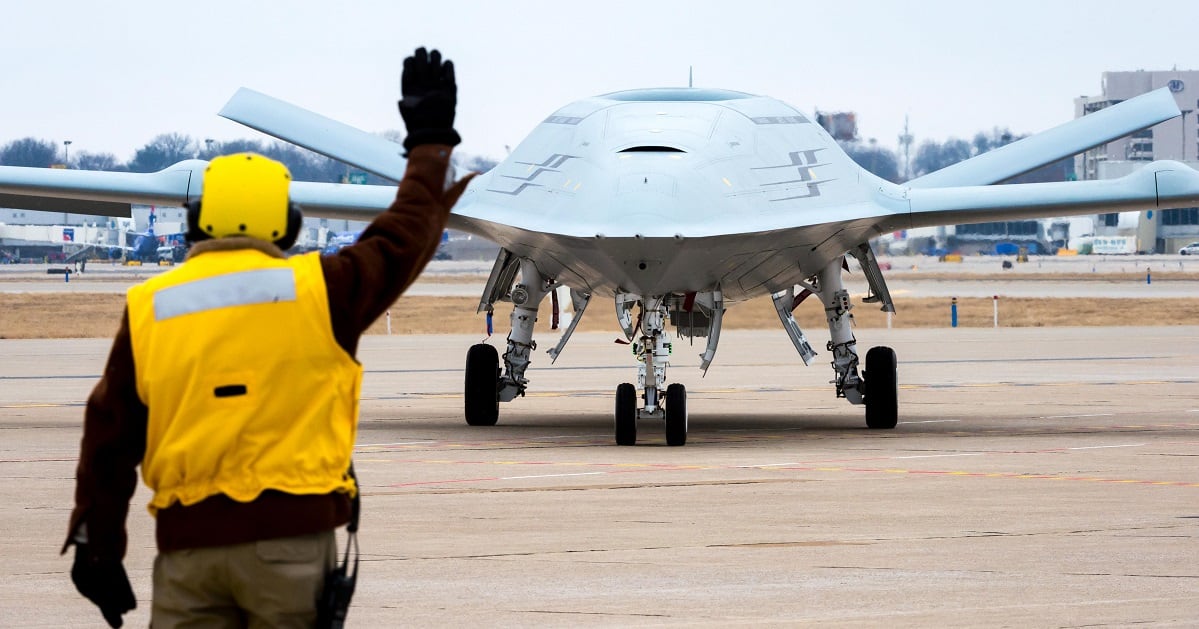As the Navy moves toward unmanning part of its future fleet via air, surface and underwater drones — plans that have prompted skepticism from some in Congress — U.S. 3rd Fleet hosted the sea service’s first-ever fleet exercise focused on unmanned systems this week on the West Coast.
Dubbed “Unmanned Integrated Battle Problem 21,” the exercise will for the first time place the fleet’s burgeoning drone assets alongside manned vessels in different scenarios.
While the Navy provided press releases, admiral interviews and multimedia materials showcasing the event, the sea service was largely mum on what the unmanned vessels will actually be doing all week.
Rear Adm. Jim Aiken, who is leading the exercise, did tell reporters Tuesday that one scenario will involve using drones to extend the sight of a warship, which will then shoot a missile at a target from long range.
But Aiken declined to discuss specifics on what the other scenarios would entail, saying the details were classified, and that they would involve intelligence, surveillance and reconnaissance, as well as teaming manned and unmanned vehicles in day-to-day fleet operations and battle plans.
RELATED

The exercise comes about a month after the Navy released its “Unmanned Campaign Plan,” a long-awaited document that was supposed to lay out the sea service’s unmanned future but instead faced criticism for its lack of depth or detail.
“I was really disappointed with the lack of substance,” Rep. Elaine Luria, D-Va., said during a hearing before the House Armed Services’ sea power subcommittee last month. “I thought it was full of buzzwords and platitudes but really short on details.”
Lawmakers on both sides of the aisle have expressed concern about the Navy’s stewardship of its unmanned aspirations, given the fiscal fiascos that have been the littoral combat ship, the aircraft carrier Gerald R. Ford and the Zumwalt-class destroyer in the past decade.
“With the recent acquisition failures on the last several ship classes, those of us on this committee are skeptical of the Navy’s ability to shepherd this new technology into employable assets that contribute to the lethality of those forces,” Luria, a retired surface warfare officer, said at last month’s hearing.
Vice Adm. James Kilby, the Navy’s top requirements officer, said at the time of the document’s release that it was just a framework and that specific plans and timelines — even some systems under development today — are classified, Defense News, a sister publication, reported in March.
In a March 16 roundtable with reporters, Kilby said the document signals the Navy is making progress.
“When we tried to produce this, documented at an unclassified level, we really were just signaling a rallying around and an understanding that this is a complex thing,” Kilby said.
This week’s exercise will involve the MQ-8 Fire Scout and MQ-9 Sea Guardian aerial drones, as well as unmanned surface vessels such as Sea Hunter and Seahawk, according to 3rd Fleet.
Part of the exercise’s goal is to assess which burgeoning unmanned assets can be further pushed out to the fleet for more real-world testing, Aiken said.
“As we team all those together, we’ll be able to evaluate what we can do and what we can’t do,” he said. “We need to move things from the technical community to the tactical community, moving things into the hands of sailors.”
Geoff is the managing editor of Military Times, but he still loves writing stories. He covered Iraq and Afghanistan extensively and was a reporter at the Chicago Tribune. He welcomes any and all kinds of tips at geoffz@militarytimes.com.




